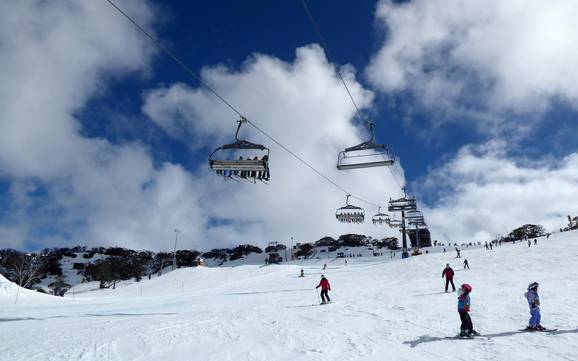Camping in national parks is more than just a weekend getaway—it’s an immersive return to nature, a way to reconnect with the earth and with each other. Whether it’s pitching a tent beneath a canopy of ancient trees, gazing at a sky ablaze with stars, or waking up to the sound of birdsong in a distant canyon, camping in these protected areas offers moments that last a lifetime. Across the globe, national parks draw millions of adventurers each year, with National Park Service alone reporting over 325 million recreational visits in 2023. The growing interest in nature-based travel has elevated camping from a rustic tradition to a globally embraced eco-conscious movement.
From the granite giants of Yosemite National Park to the turquoise lakes of Banff National Park, campers have a wealth of options when it comes to choosing their ideal wilderness retreat. The scale of experiences is vast—some national parks boast wildlife safaris like Kruger National Park, while others offer glacial hiking and solitude, as in Torres del Paine. What unites them all is the spirit of discovery and the simplicity of life outdoors, an experience that people of all ages and backgrounds continue to seek.
For those just starting out or planning a family-friendly trip, guidance is key. Many parents are turning to resources like Recreation.gov and Parks Canada to find suitable campsites with clean facilities and educational programs. In 2023, over 50% of park visitors in the U.S. chose overnight stays, with significant growth among younger families and first-time campers. The rise in participation shows that camping in national parks is not only accessible, but increasingly popular with a wide demographic.
Still, nature isn’t without its risks. That’s why preparing properly—whether it’s understanding weather variability in Grand Canyon National Park or how to safely store food in Great Smoky Mountains National Park—can be the difference between a magical trip and a misadventure. Organizations like Leave No Trace and Outdoor Industry Association emphasize the importance of preparation, respect for wildlife, and environmental responsibility. In fact, adopting Leave No Trace principles has shown to reduce environmental impact by up to 65% in certain overused campgrounds.
Eco-camping is also gaining momentum, with campgrounds in parks such as Joshua Tree and Glacier National Park now offering solar-powered facilities and composting systems. These innovations ensure that the beauty and biodiversity of these landscapes are preserved for future generations. Many national parks have even partnered with indigenous communities to enhance cultural awareness and offer educational programs that highlight ancestral connections to the land.
Camping in national parks today represents a fusion of tradition, adventure, and sustainability. As travelers look for more meaningful and mindful experiences, national parks stand out not only for their breathtaking landscapes but for the stories they hold and the stewardship they inspire.
Wilderness Escapes: Top National Parks for Unforgettable Camping
Yosemite National Park: A Classic Wilderness Experience
Yosemite hosts more than 3.5 million visitors annually, with over 1.3 million opting to stay overnight. Known for its towering granite cliffs and ancient sequoias, Yosemite offers 13 campgrounds, many of which can accommodate tents and RVs. Camping in national parks like Yosemite allows travelers to wake up to the sounds of cascading waterfalls and breathtaking views of El Capitan.
Banff National Park: Canada’s Crown Jewel
Attracting over 4 million visitors each year, Banff features more than 2,400 individual campsites across 13 campgrounds. Campers can enjoy glacier-fed lakes and alpine meadows with access to over 1,600 kilometers of hiking trails. Banff exemplifies how camping in national parks provides a front-row seat to nature’s raw beauty.
Kruger National Park: Safari Under the Stars
Kruger in South Africa spans 19,485 square kilometers and welcomes over 1.8 million tourists annually. It offers a unique twist on traditional camping with rest camps, bushveld camps, and designated wilderness trails. Camping here means encountering elephants, lions, and rhinos in their natural habitat—making it one of the most thrilling park experiences in the world.
Torres del Paine: Patagonia’s Untamed Marvel
This Chilean gem sees around 250,000 visitors each year. It provides both rugged camping zones and “glamping” options for the less adventurous. With its towering peaks and glacial lakes, Torres del Paine is ideal for hiking and photography enthusiasts looking for solitude and awe.
Essential Gear and Tips for a Safe National Park Camping Experience
Pack Smart: The Must-Have Essentials
When planning for camping in national parks, your gear can make or break the trip. A 2022 survey by Outdoor Industry Association showed that 78% of first-time campers cited lack of preparation as their top regret. Essentials include a weather-resistant tent, water filtration system, bear-proof food containers, and layered clothing.
Navigation and Communication Tools
Many parks have limited mobile coverage. Bringing a physical map and compass is vital. For added safety, a GPS beacon or satellite communicator is recommended—especially in vast parks like Yellowstone or Denali, where emergency services can take hours to arrive.
Weather Preparedness and First Aid
National parks often have unpredictable weather. For instance, temperatures in Grand Canyon can swing 30°F in a single day. Always carry a weather radio and a comprehensive first-aid kit. According to the National Park Service, over 2,500 campers are treated annually for minor injuries or weather-related issues.
Wildlife Safety and Food Storage
In parks like Great Smoky Mountains, with over 1,500 black bears, food storage is crucial. Use bear lockers and avoid storing food in tents. The NPS reports that improper food storage accounts for 75% of human-bear encounters during camping in national parks.
Leave No Trace Principles
Nearly 95% of US national parks enforce “Leave No Trace” principles. These include packing out all trash, using biodegradable soap, and camping at least 200 feet away from water sources. Following these ensures that future generations can enjoy pristine environments.
Family-Friendly Camping Adventures in Protected Natural Wonders
Acadia National Park: Coastal Campgrounds for All Ages
With over 3.9 million visitors in 2023, Acadia in Maine offers multiple campgrounds like Blackwoods and Seawall, perfect for families. Scenic drives, tidal pools, and ranger-led programs make it an educational yet fun escape. Camping in national parks here combines relaxation with learning opportunities for children.
Rocky Mountain National Park: Nature’s Playground
Home to over 350 miles of trails and 5 campgrounds, Rocky Mountain NP saw more than 4.1 million visitors last year. Many trails are stroller-friendly, and junior ranger programs educate kids on local flora and fauna. Family camping here means bonding through outdoor exploration and storytelling under the stars.
Zion National Park: A Desert Adventure for Families
Zion welcomes about 4.7 million visitors yearly and is known for its dramatic cliffs and slot canyons. South and Watchman Campgrounds offer accessible facilities, and shorter hikes like Riverside Walk make it ideal for families. Camping in national parks like Zion introduces children to geology and desert ecosystems.
Jasper National Park: Stargazing and Wildlife Watching
Located in Alberta, Canada, Jasper is a designated Dark Sky Preserve, making it great for stargazing. With over 1,800 campsites, it’s perfect for night-sky education and moose sightings. In 2022, it hosted about 2.5 million visitors, many of whom were families on nature-oriented holidays.
Eco-Camping and Sustainable Practices in National Park Campsites
Solar-Powered Campsites and Off-Grid Living
National parks like Joshua Tree and Glacier have started offering solar-powered amenities. This not only reduces carbon footprints but also teaches visitors about sustainable energy. For example, Glacier NP’s St. Mary Campground uses solar lighting and composting toilets to promote eco-conscious camping in national parks.
Reusable and Biodegradable Supplies
The use of reusable dishware, biodegradable soaps, and refillable water bottles is on the rise. A study by Leave No Trace Center in 2023 found that eco-conscious campers reduced waste by 60% compared to traditional methods. Simple changes can significantly lower environmental impact.
Community and Educational Initiatives
Some parks, like Shenandoah, offer sustainability workshops and ranger talks on local ecology. Over 120,000 visitors in 2022 attended such programs. These sessions help visitors understand the long-term benefits of conservation while enjoying camping in national parks.
Wildlife-Friendly Practices
Feeding wildlife alters behavior and endangers both animals and people. Eco-campers are advised to use scent-proof bags and store food properly. According to Yellowstone statistics, bear-related incidents decreased by 40% from 2019 to 2023 thanks to better education and compliance with storage rules.
Supporting Local and Indigenous Communities
Purchasing firewood, crafts, and local produce from nearby communities supports economic sustainability. Parks like Kakadu in Australia actively partner with Aboriginal communities to ensure that camping experiences are culturally respectful and educational.




